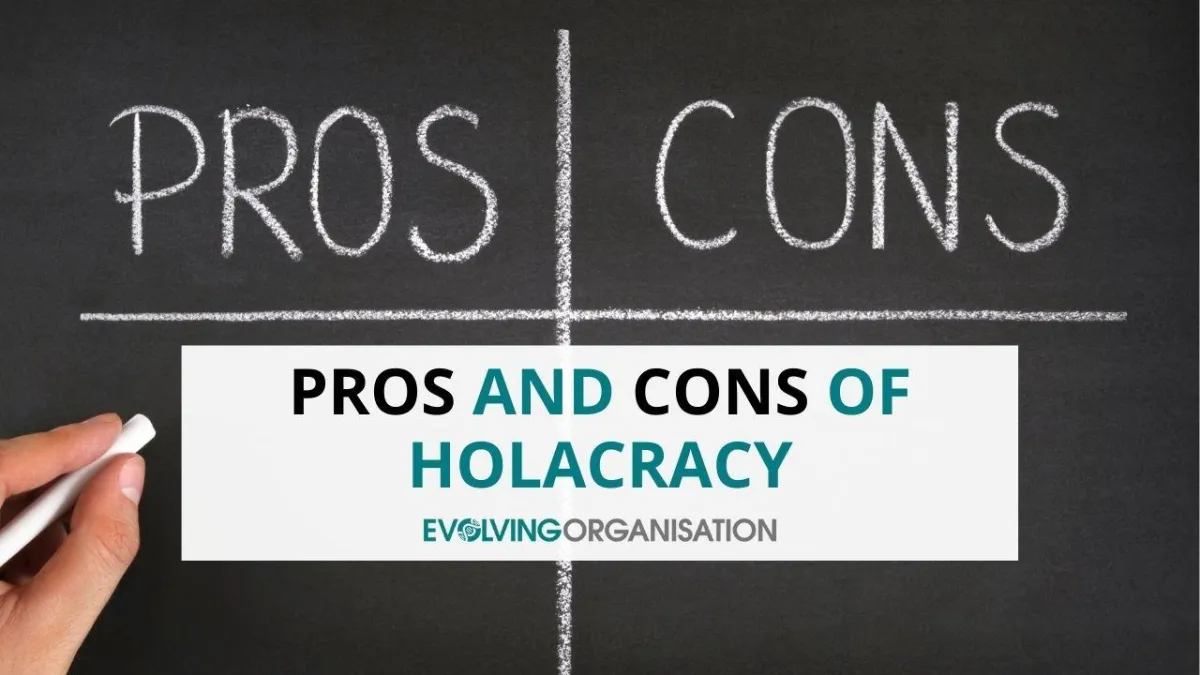
Exploring the Pros and Cons of Holacracy
Holacracy is a self-management system that distributes authority across roles and circles, replacing traditional hierarchies for more of an introduction learn what is holacracy structure. It aims to create more responsive, transparent, and adaptable organisations.
While it offers significant advantages in fostering agility and empowerment, it also presents challenges that organizations must consider carefully. This blog provides a clear overview of the benefits and drawbacks of Holacracy, supported by real-world examples, to help you determine whether it aligns with your organisation's goals.
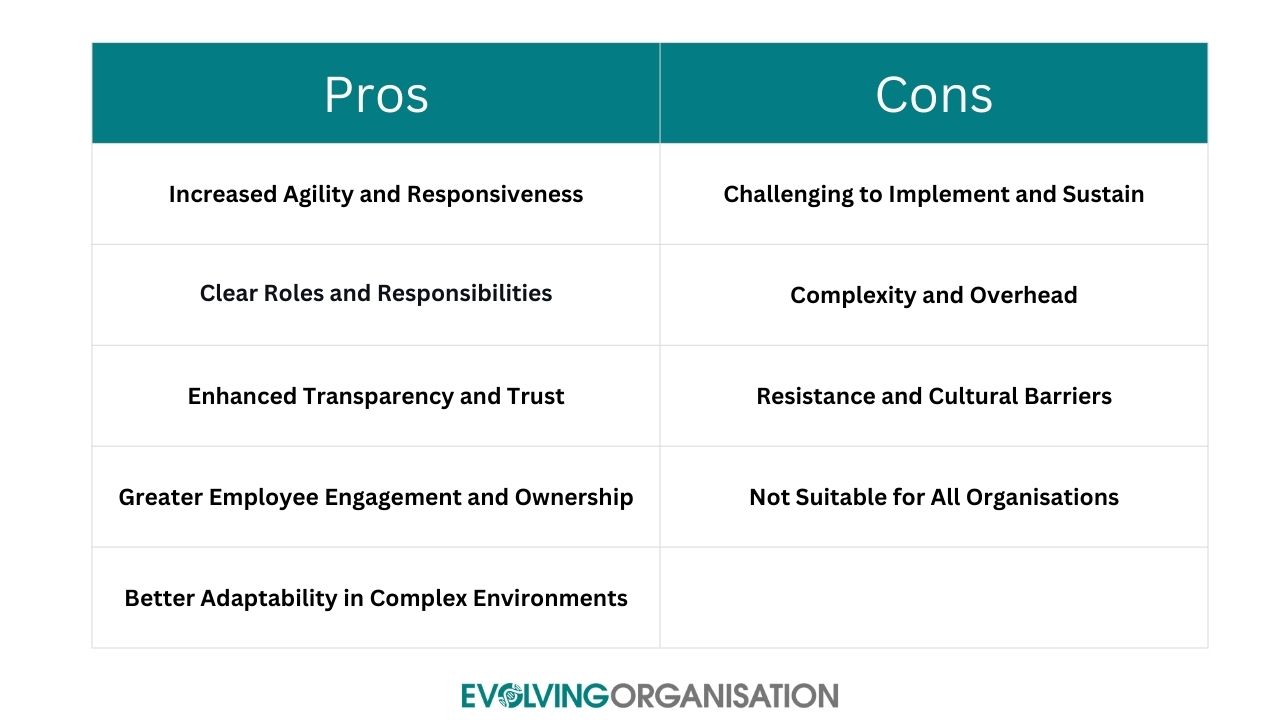
Pros of Holacracy
1. Increased Agility and Responsiveness
Holacracy enables teams to respond quickly to change because decision-making is decentralised. Roles have apparent authority, so teams can pivot or address issues without waiting for top-down approval. It aligns with self-organizing principles beyond hierarchy and supports organisations in fast-changing environments.
Example:
Mercedes-Benz.io adopted Holacracy to improve responsiveness in their digital teams. Clear roles and autonomous circles allowed faster decision-making and greater agility in responding to market demands.
2. Clear Roles and Responsibilities
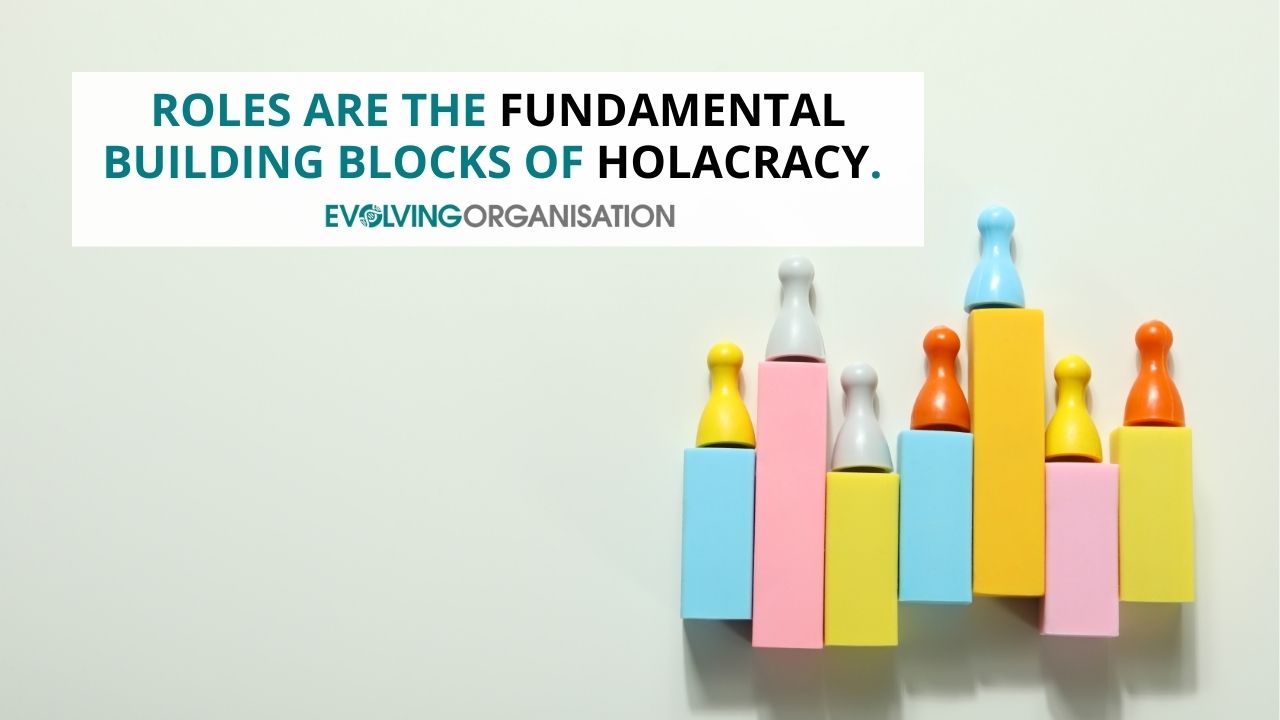
In Holacracy, every role has a defined Purpose, Domains, and Accountabilities. This clarity reduces confusion, overlaps, and duplication of effort. It creates a shared understanding of who is responsible for what, fostering accountability and ownership.
Example:
A marketing role with a Purpose to increase brand awareness, a Domain of social media, and specific Accountability, such as managing campaigns, ensures everyone knows their responsibilities and decision rights.
3. Enhanced Transparency and Trust
Holacracy's structured processes and regular governance meetings promote transparency. Tensions surface openly and are resolved through clear protocols, building trust and a culture of openness.
Example:
Valsplat reports increased team empowerment and better clarity around responsibilities, which has led to more effective collaboration and trust across teams.
4. Greater Employee Engagement and Ownership

Because authority is distributed, team members feel more ownership of their work. This boosts motivation, encourages initiative, and fosters a culture of continuous improvement.
Example:
Zappos implemented Holacracy to decentralise decision-making. Employees reported feeling more engaged and motivated because they had a direct say in their roles and responsibilities.
5. Better Adaptability in Complex Environments
Holacracy's flexible structure allows organisations to adapt quickly to external changes. It supports continuous learning and evolution, vital in today's uncertain times.
Cons of Holacracy
1. Challenging to Implement and Sustain
Holacracy requires a significant cultural shift. It involves training, ongoing coaching, and a commitment to new processes. Many organisations struggle with resistance, especially from traditional management structures.
Example:
Some companies find the transition disruptive and hard to sustain without dedicated support, risking losing momentum or reverting to old hierarchies.
2. Complexity and Overhead
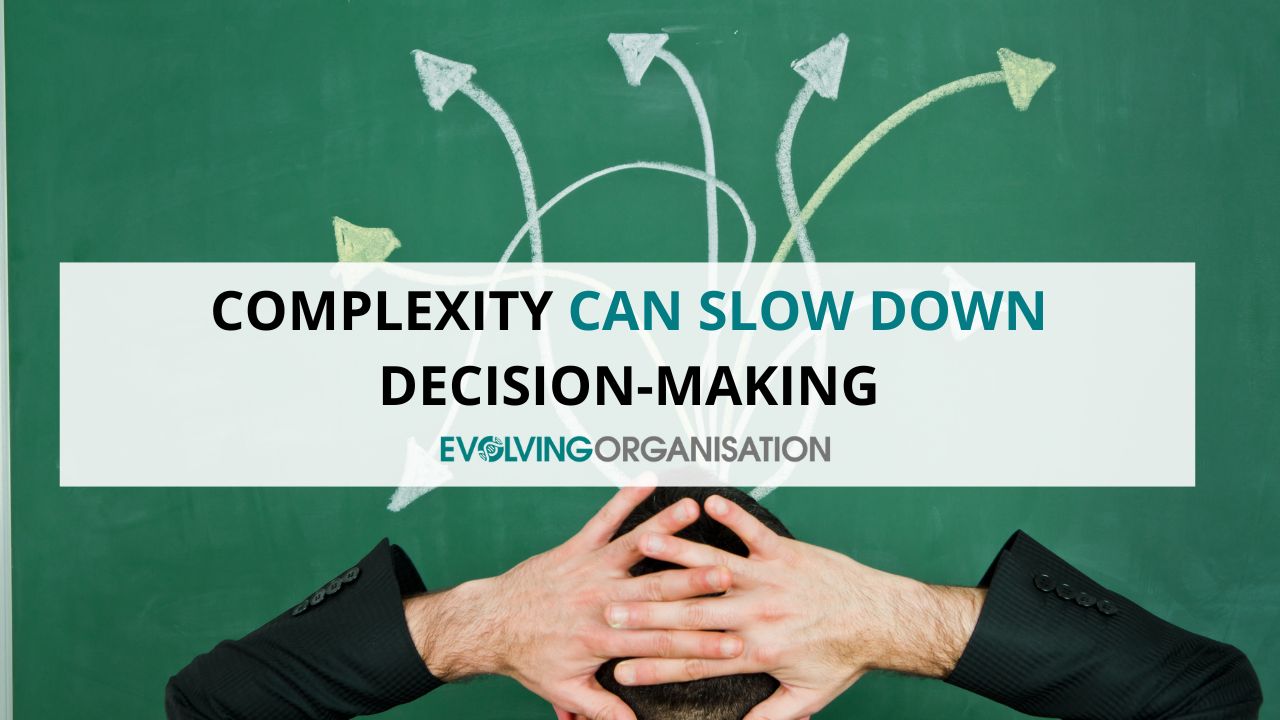
The structured meetings, governance processes, and ruleset can create overhead. If not managed well, this complexity can slow down decision-making for some teams.
Example:
Implementing Holacracy in a small team without sufficient facilitation can lead to lengthy governance meetings that hinder agility rather than enhance it.
3. Resistance and Cultural Barriers
Holacracy challenges deeply ingrained hierarchical mindsets. Resistance from leadership or staff accustomed to traditional management can impede adoption and effectiveness.
4. Not Suitable for All Organisations
Holacracy works best in organisations committed to self-management and transparency. It may not be suitable for organisations resistant to cultural change or those needing strict control over decisions.
Examples of Holacracy
Zappos
Zappos is the most famous example of Holacracy in practice. The company adopted it to promote autonomy and innovation. While facing challenges, it created a more engaged and adaptable organisation. Zappos' experience demonstrates how distributed authority can foster ownership and responsiveness.
Mercedes-Benz.io
Mercedes-Benz.io integrated Holacracy to enhance agility in its digital teams. It found that clear roles and autonomous circles enabled faster decision-making, which improved its ability to respond to market shifts and customer needs.
Valsplat
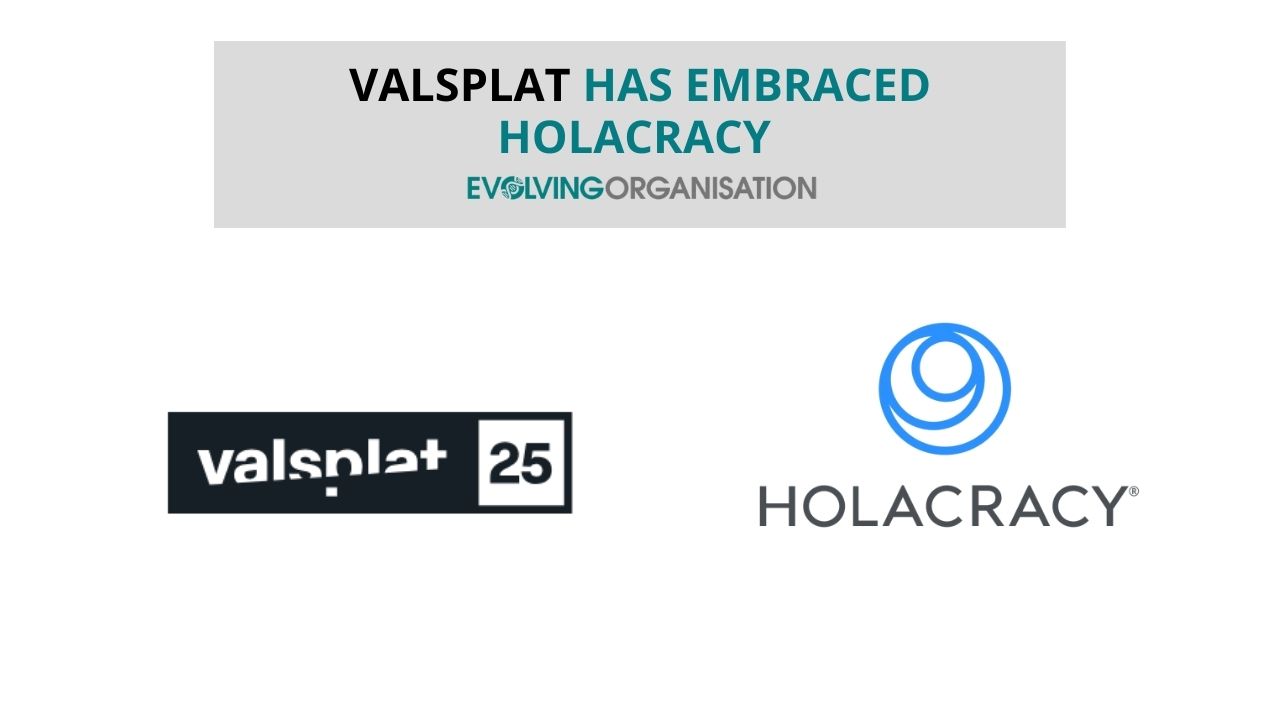
Valsplat embraced Holacracy to shift beyond traditional hierarchies. They experienced increased team empowerment, clearer responsibilities, and more effective collaboration. Their journey highlights how Holacracy can support resilient, self-managing teams.
Also Read: Adhocracy vs Holacracy
Conclusion
Holacracy offers a compelling framework for organisations seeking to decentralise authority, foster agility, and build a culture of ownership. However, it requires a strong commitment to cultural change, ongoing training, and careful implementation. When adopted thoughtfully, Holacracy can transform organisations into more resilient, transparent, and responsive entities, aligned with self-organizing principles beyond hierarchy.
Before embarking on this journey, we can help you assess your organisation's readiness and ensure you have the resources and mindset to sustain the change. Take our free 10-minute Team Needs check here to find out if your Team has needs this approach could help with. With the right approach, Holacracy can be a powerful tool for navigating today's complex and uncertain business landscape.
Suppose you want to learn these practices in depth. In that case, programs like Team Clarity & Faster Decision-Making and The Meetings Revolution offer step-by-step guidance and practical tools to help your Team make these shifts confidently and effectively.
When you move beyond hierarchy and empower your Team to own their roles, communicate openly, and adapt quickly, you improve performance and create the foundation for lasting success in a fast-changing world.
This blog continues our commitment to improving performance and decision-making within organisations. Stay tuned for our next instalment, where we will explore a range of practical tools for this purpose.
Visit our website for more insights and resources. Together, let's evolve and adapt to the challenges of our dynamic world and build a better, more collaborative future.


